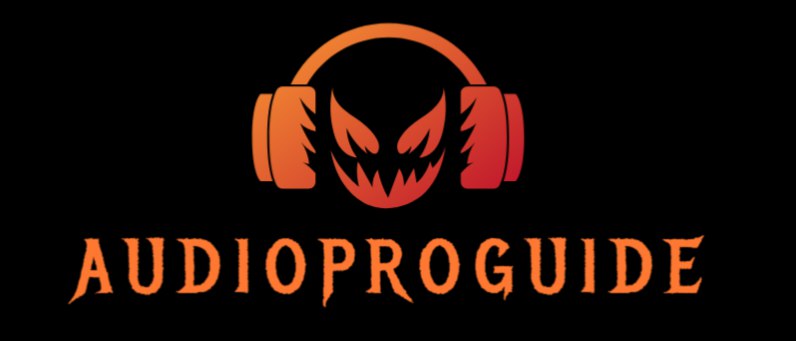In the age of instant access and digital overload, time is a precious commodity. Nowhere is this truer than in the realm of audio editing, where mountains of MP3s, podcasts, and voice recordings can quickly become a time-consuming labyrinth. Enter the game-changer: batch audio conversion. This powerful technique transforms the tedious task of individual file manipulation into a streamlined, automated process, saving you hours of tedium and unlocking a world of creative possibilities.
Overview of Batch Conversion of Audio Files
Batch conversion of audio files is a systematic process that involves the simultaneous transformation of multiple audio files from one format to another or applying specific settings uniformly across a set of files. This method is particularly advantageous when dealing with extensive audio libraries or large datasets, as it eliminates the need for manual handling of each file individually.
- Automation and Simultaneous Processing: Batch conversion relies on automation to process multiple audio files simultaneously. This is achieved by setting predefined parameters for the conversion process, such as file format, bitrate, sample rate, and any additional effects or modifications.
- Efficiency in Handling Large Volumes: When working with a substantial number of audio files, manually converting each file becomes impractical and time-consuming. Batch conversion streamlines this process, allowing users to define the conversion criteria once and apply it to the entire set of files, significantly reducing the time and effort required.
- Format Flexibility: Batch conversion supports a wide range of audio formats, providing users with the flexibility to convert files into formats that suit their specific needs. This is particularly useful when dealing with compatibility issues across different devices, software, or platforms.
- Consistency in Output: One of the key advantages of batch conversion is the ability to maintain consistency in the output files. Since the same set of parameters is applied to all files, users can ensure a uniform quality and format throughout the entire batch, reducing the risk of discrepancies.
- Customization and Presets: Batch conversion tools often offer customization options and preset configurations. Users can create predefined settings or presets based on specific criteria, making it easier to apply consistent conversion parameters across different projects or workflows.
- Resource Optimization: By processing multiple files concurrently, batch conversion optimizes system resources. This is crucial for preventing system overload, improving overall efficiency, and avoiding potential errors that may arise when handling a large number of files individually.
- Scalability: The scalability of batch conversion makes it suitable for projects of varying sizes. Whether working with a few dozen files or a massive audio library, the automated nature of batch conversion ensures that the process remains efficient and adaptable to different project requirements.
In summary, batch conversion of audio files is a powerful and efficient method that leverages automation to process multiple files simultaneously. Its ability to handle large volumes of files, ensure consistency, and offer format flexibility makes it an invaluable tool for individuals and professionals working with diverse audio content.
Advantages of Batch Audio File Conversion
Batch audio file conversion offers several advantages that make it a preferred choice for handling large volumes of audio data efficiently. Understanding these advantages is crucial for appreciating the impact of batch conversion on workflow optimization and resource utilization.
- Time Efficiency: The foremost advantage of batch audio conversion is the significant time savings it provides. Rather than converting each file individually, which can be a time-consuming process, batch conversion allows users to process multiple files simultaneously. This time efficiency is particularly beneficial when dealing with extensive audio libraries or when facing tight project deadlines.
- Consistency in Output: Batch conversion ensures uniformity in the output files. By applying the same set of parameters to all files, users can maintain a consistent audio quality and format across the entire batch. This is crucial for projects where maintaining a standardized output is essential, such as audio production or creating content for various platforms.
- Resource Optimization: The process of batch conversion optimizes system resources by efficiently utilizing available hardware capabilities. By concurrently processing multiple files, it prevents unnecessary strain on the system, reducing the risk of slowdowns, crashes, or other performance issues. This resource optimization is especially valuable when dealing with large-scale audio processing tasks.
- Automation and Reduced Human Error: Automation is a key feature of batch conversion, minimizing the potential for human error. Once the parameters are set, the software takes care of the conversion process. This reduces the likelihood of mistakes associated with manual conversion, ensuring accuracy and consistency in the output.
- Handling Large Datasets: Batch conversion is particularly advantageous when working with large datasets of audio files. Manual conversion of each file in such scenarios would be impractical and time-consuming. Batch conversion allows for the streamlined processing of numerous files in a single operation, making it a scalable solution for projects of varying sizes.
- Increased Productivity: The time saved and the reduced manual effort contribute to increased overall productivity. Users can focus on other aspects of their work while the batch conversion process runs in the background. This increased productivity is especially valuable in professional environments where efficiency is paramount.
| Advantage | Description | Benefit |
| Time Efficiency | Simultaneous processing reduces the overall time spent on conversion tasks. | Faster completion of audio processing tasks. |
| Consistency in Output | Uniform application of parameters ensures a consistent quality and format across all converted files. | Standardized and reliable audio outputs. |
| Resource Optimization | Efficient utilization of system resources prevents overload and enhances overall performance. | Smooth operation without system slowdowns. |
| Automation and Error Reduction | Automated processes reduce the potential for human error, ensuring accuracy and reliability. | Minimized risk of mistakes in the conversion process. |
| Handling Large Datasets | Streamlined processing of numerous files makes batch conversion suitable for projects with extensive datasets. | Effective management of large audio libraries. |
| Increased Productivity | Time saved and reduced manual effort contribute to heightened productivity, allowing users to focus on other tasks. | Enhanced overall workflow efficiency |
Common Scenarios for Using Batch Audio Conversion
Batch audio conversion finds its application across a spectrum of scenarios, each reflecting the versatility and practicality of this approach in the management and manipulation of audio files.
In scenarios requiring File Format Standardization, batch conversion serves as a solution for achieving consistency within a digital audio library. By applying a unified format to a diverse set of files, compatibility is ensured across various playback devices and platforms, simplifying the user experience.
Another prevalent use case involves Compression and Bitrate Adjustment. Batch conversion provides an efficient means to optimize file sizes without sacrificing audio quality. This becomes particularly relevant in contexts where storage space is a consideration, or when adapting audio content to meet specific requirements of different distribution channels.
Format transitions, such as Format Migration, represent yet another common scenario. Batch conversion facilitates the seamless shift from one audio format to another, streamlining the process of updating legacy formats or adapting content for distribution through various channels.
In the realm of audio production, batch conversion proves instrumental in Post-Production Processing. Tasks such as normalizing audio levels or applying consistent effects across a batch of files enhance the efficiency of the post-production phase, allowing for standardized enhancements without the need for manual adjustments on an individual basis.
Tools and Software for Batch Audio Conversion
Exploring the landscape of tools and software available for batch audio conversion reveals a diverse array of options catering to different user needs and preferences.
Various open-source solutions, such as FFmpeg, have gained popularity for their versatility and extensive format support. FFmpeg provides a powerful command-line interface for batch conversion, allowing users to customize parameters and automate the process according to their specific requirements.
On the user-friendly front, software like Audacity has become a staple in the toolkit of many audio enthusiasts. Audacity, being free and open-source, offers a straightforward interface with batch processing capabilities. It is well-suited for users seeking a balance between simplicity and functionality.
For those engaged in professional audio work, tools like Adobe Audition offer advanced features for batch processing. Adobe Audition provides a comprehensive suite of tools, enabling users to perform complex batch operations while maintaining a high degree of control over the conversion process.
Commercial software like dBpoweramp caters to users who prioritize a polished user interface and efficient batch processing. Known for its user-friendly approach, dBpoweramp simplifies the conversion process while delivering high-quality results, making it suitable for both beginners and experienced users.

